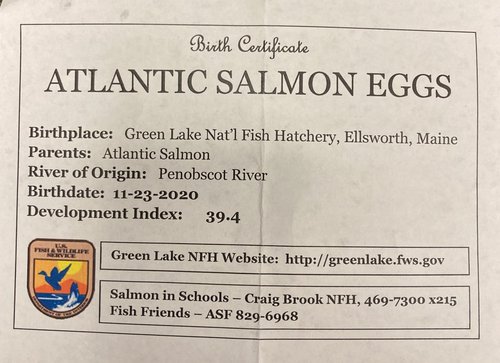Our school joined the Atlantic Salmon Federation’s Fish Friends Program and received 200 Atlantic salmon eggs to raise in our classroom. Students developed a personal connection to these fish as we watched them grow and then released them into our local Androscoggin River watershed. The students were motivated and excited about restoring the population of fish and developed a sense of environmental stewardship while developing their science and engineering skills.



Students were able to see the life cycle of this endangered species firsthand as we researched the human impact on the salmon over the last 100 years. A guest speaker shared the history of the water quality of our watershed and human impacts on it. Students participated in several hands-on activities related to the watershed including investigations of macroinvertebrates to determine the water quality of local streams and rivers. Students recorded water temperature, pH levels, and the number of salmon eggs hatched and released. We also focused on how fish ladders help increase the number of Atlantic salmon and other fish to return to their spawning area. As we move forward, we will make connections to climate change and our ecosystem.
This activity exemplified the following Connected Learning Ecosystem attributes:
- Working in the open
- Connecting informal and formal learning
- Investigating climate change
- Connecting local to global
- Building data literacy
- Supporting rural communities
Submitted by Tonya Prentice, MSAD44, Oxford County, Maine.




